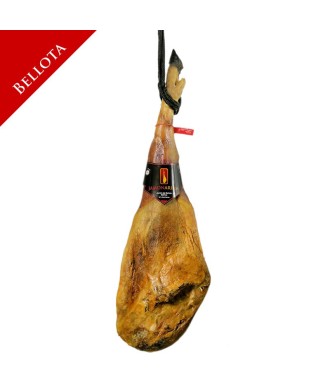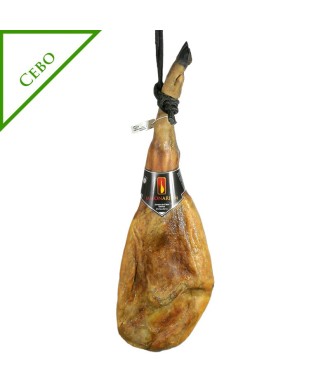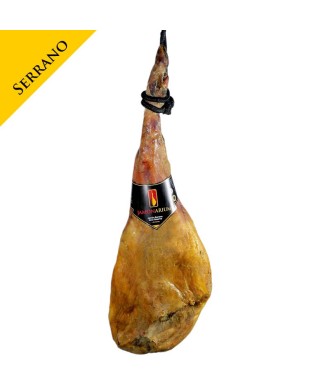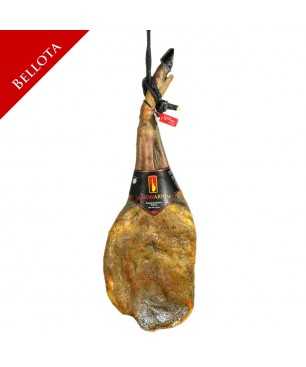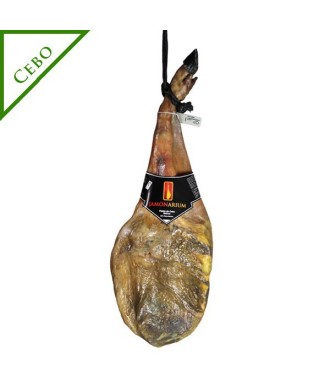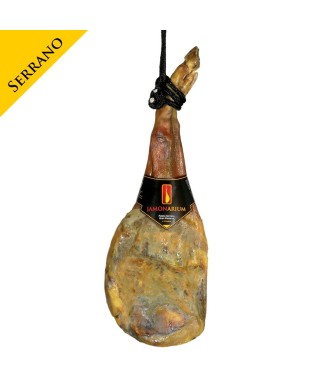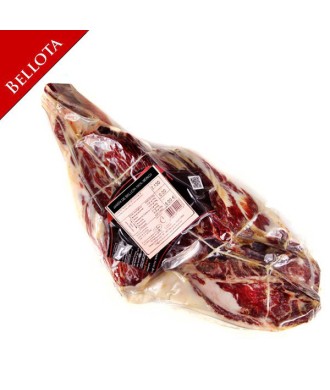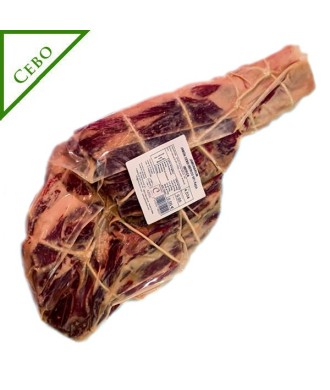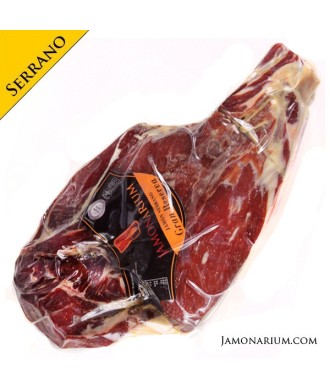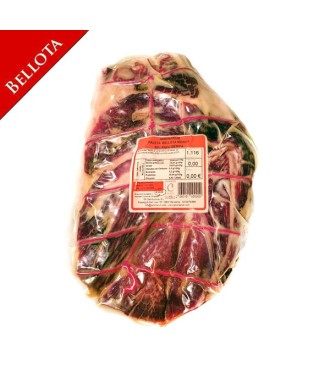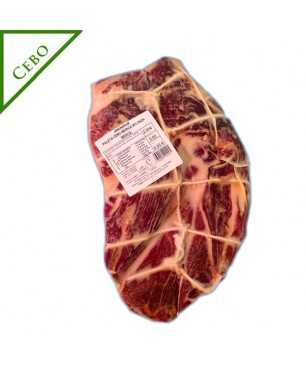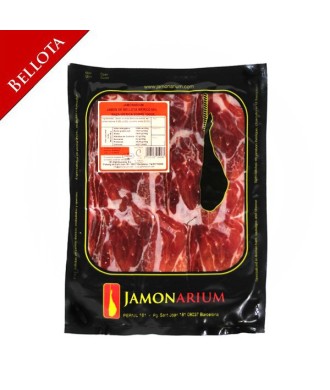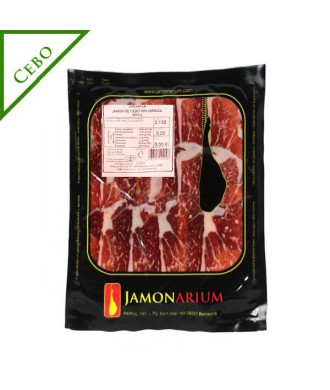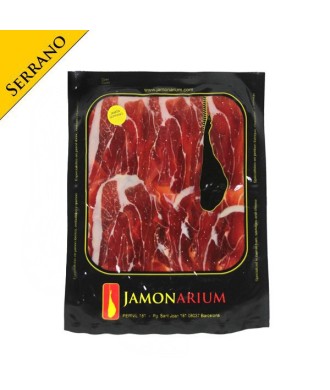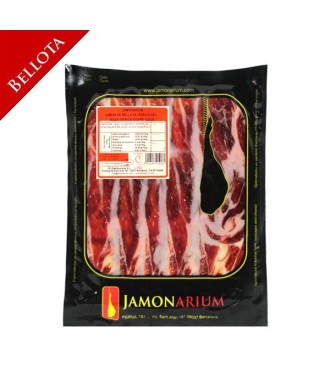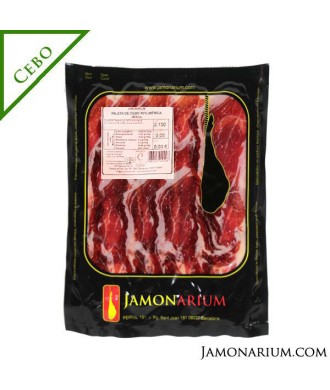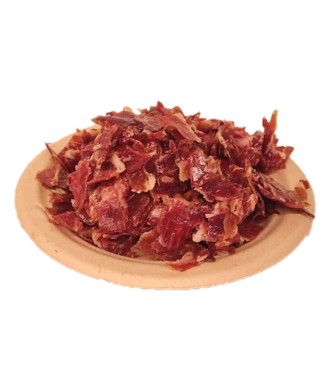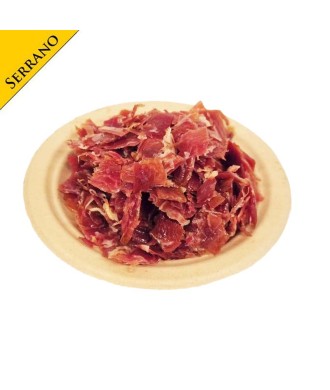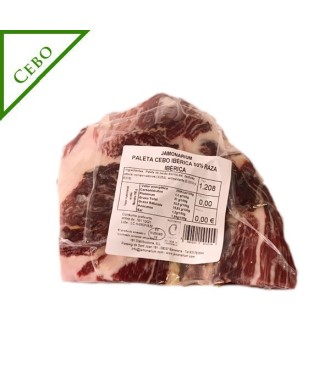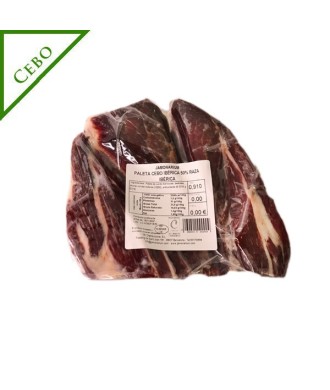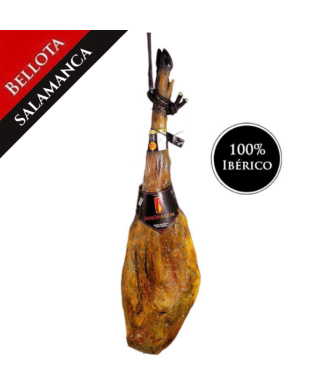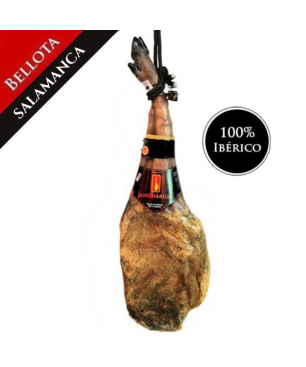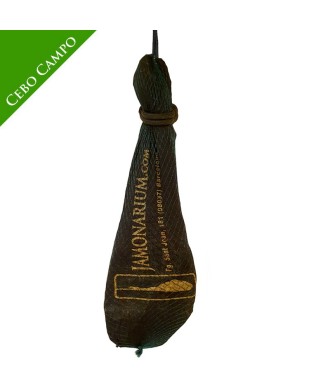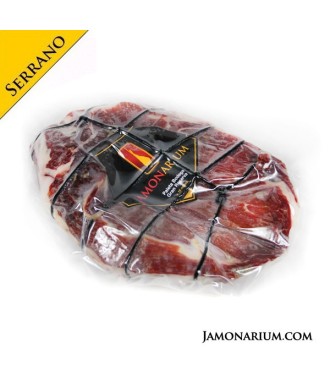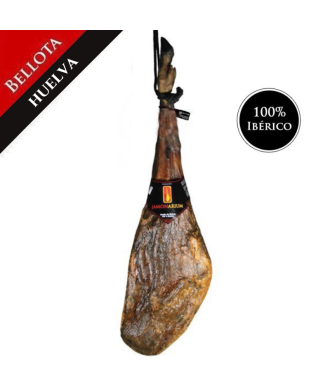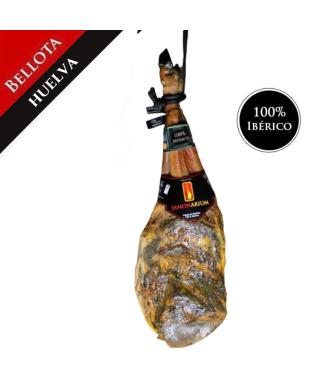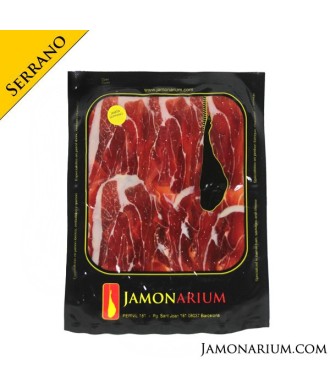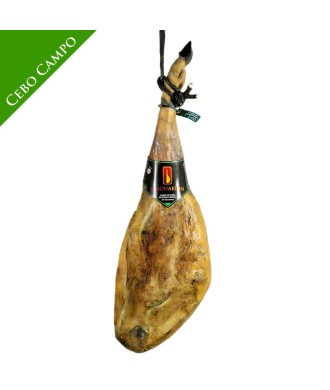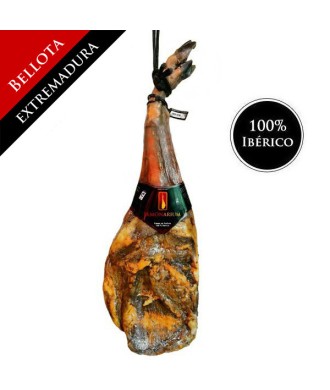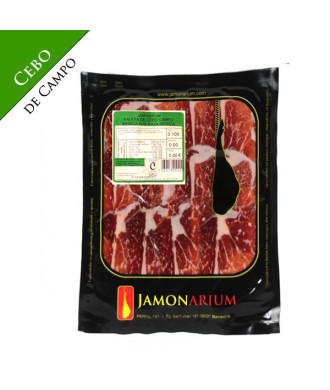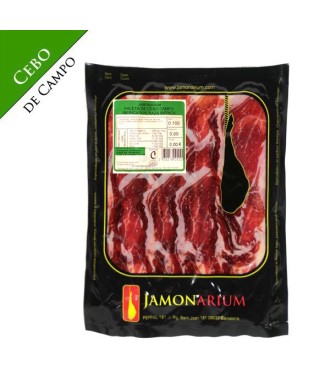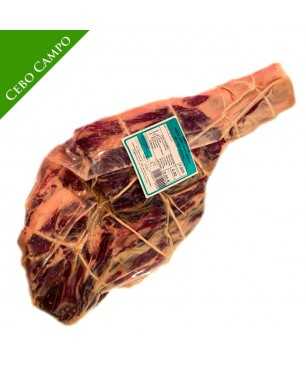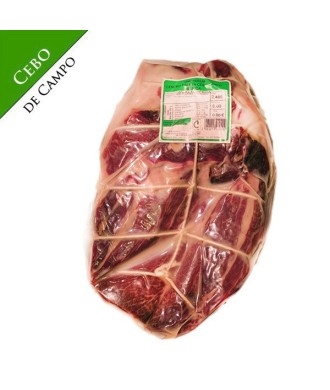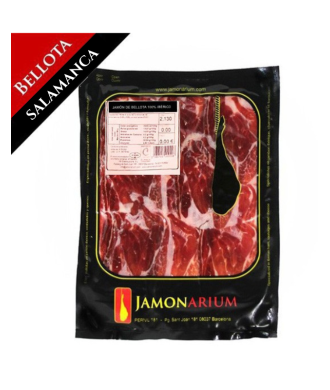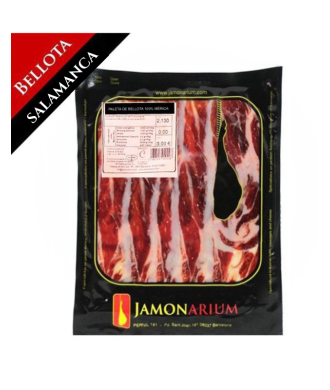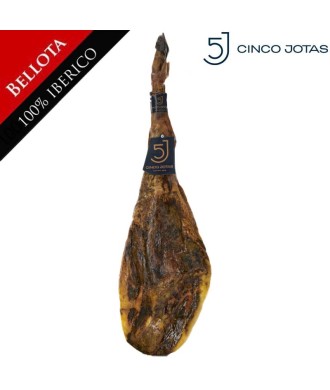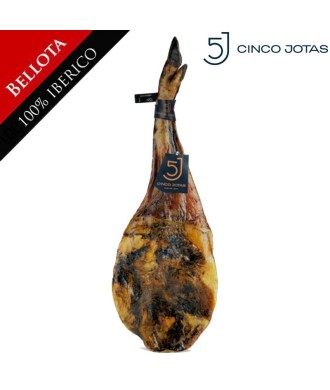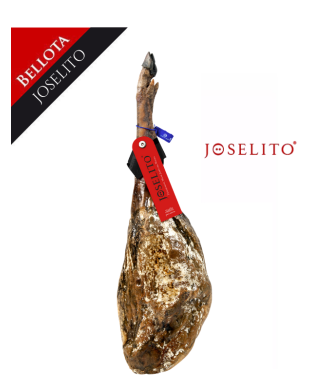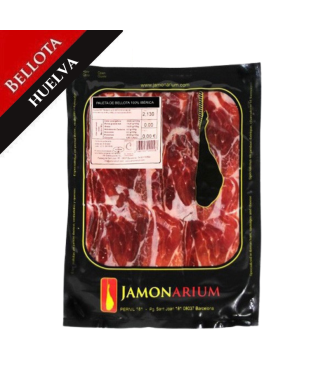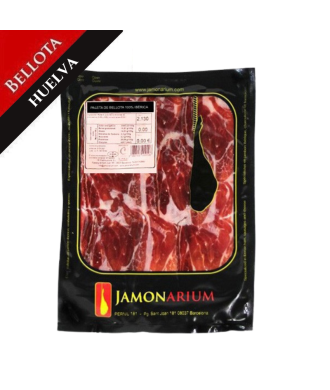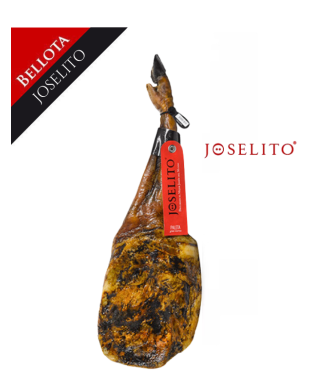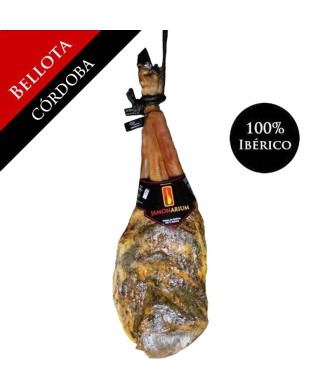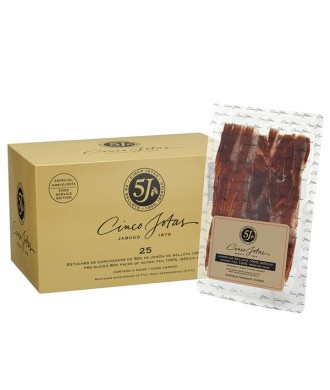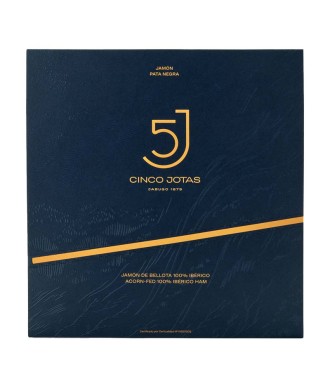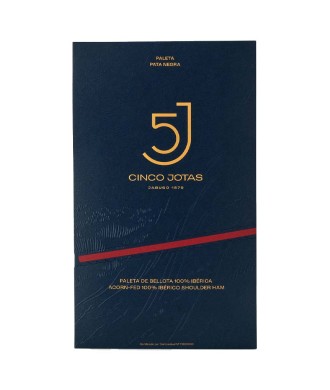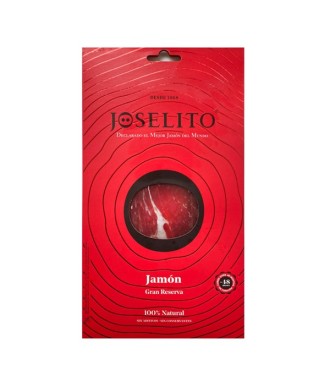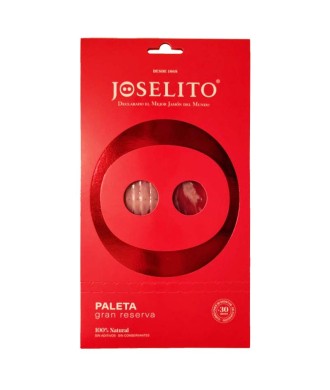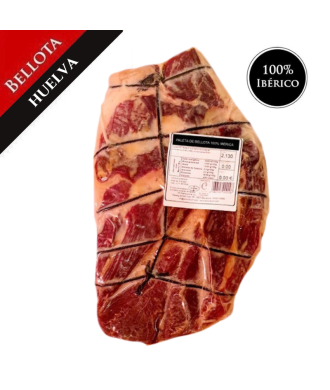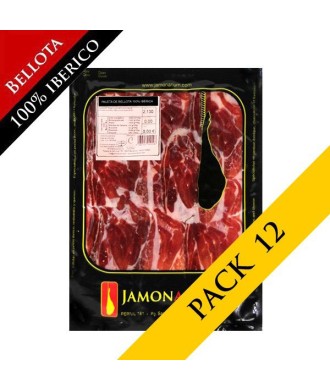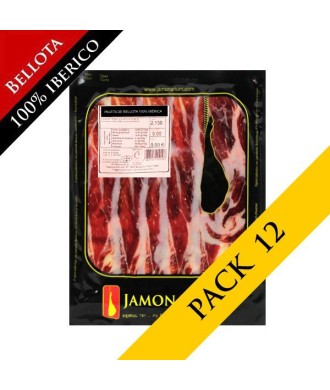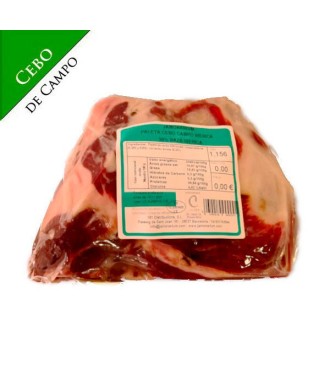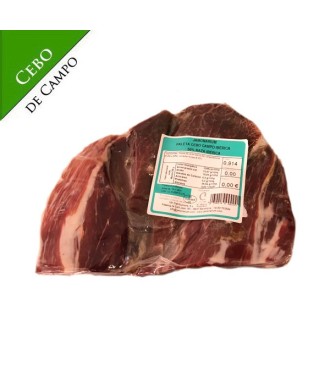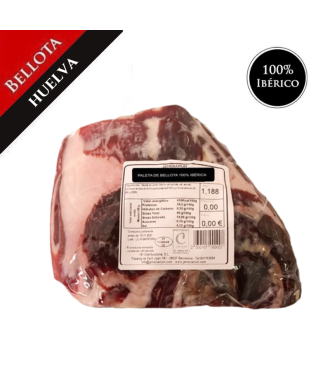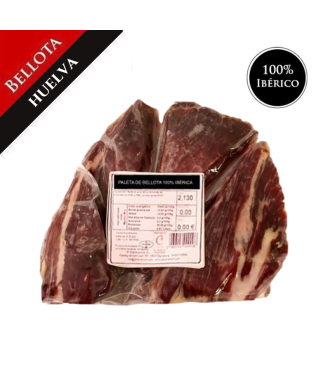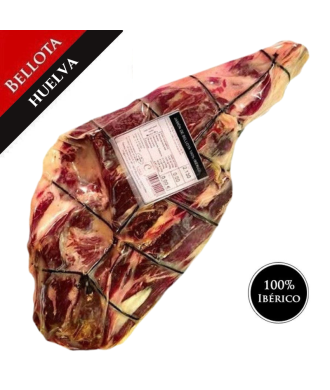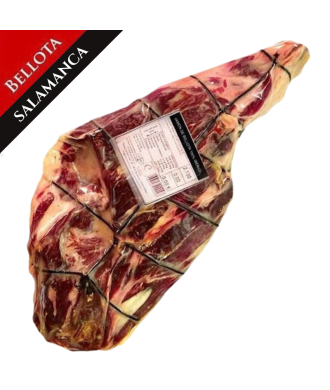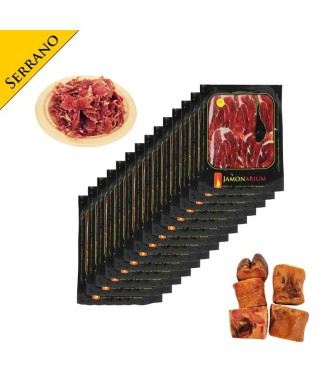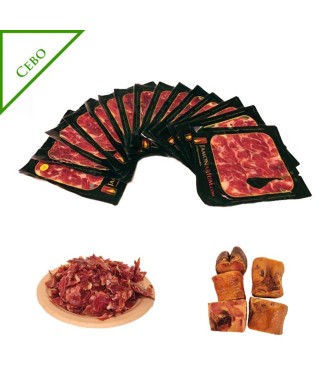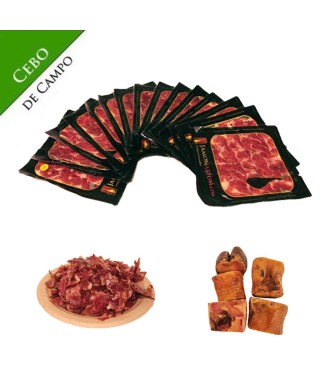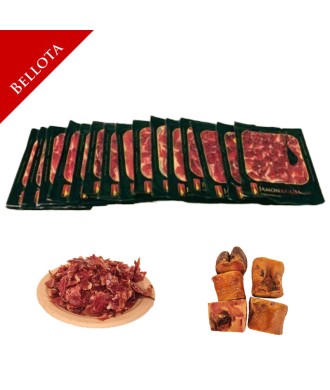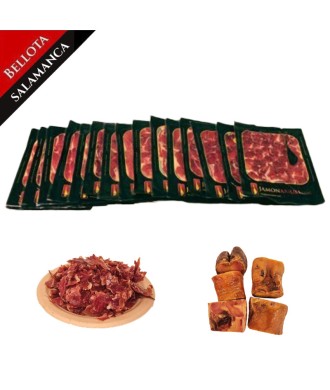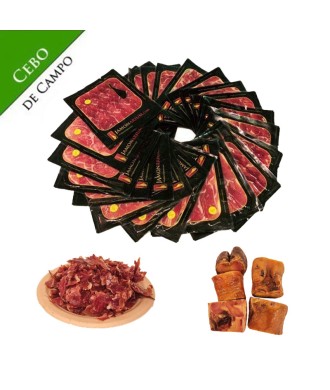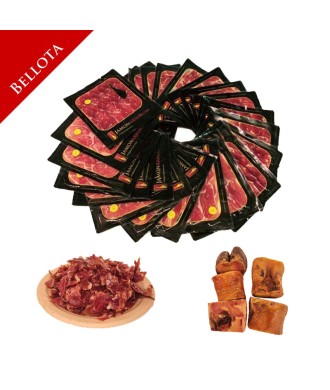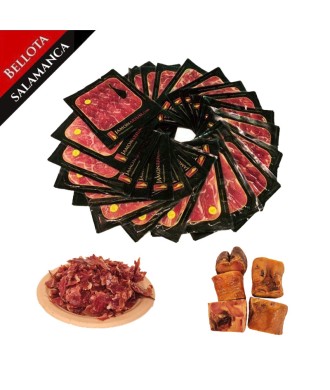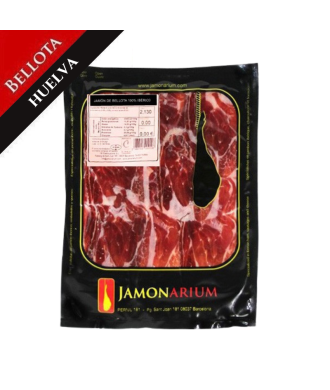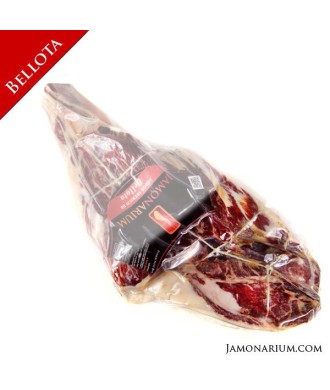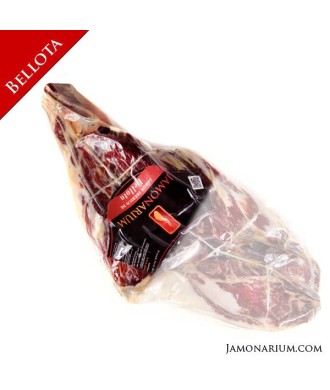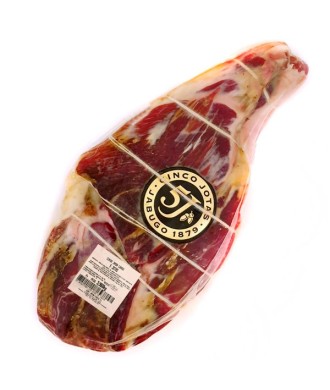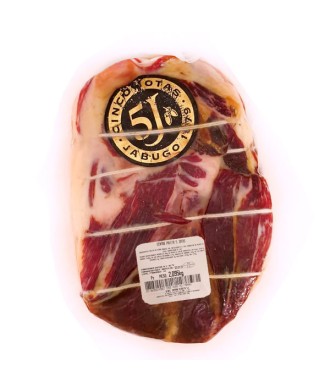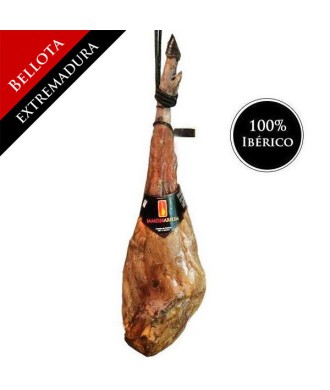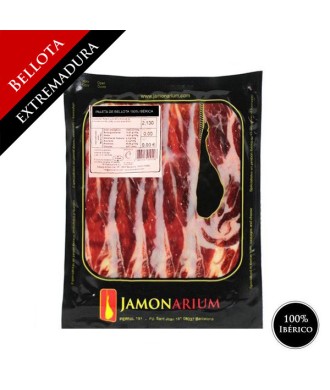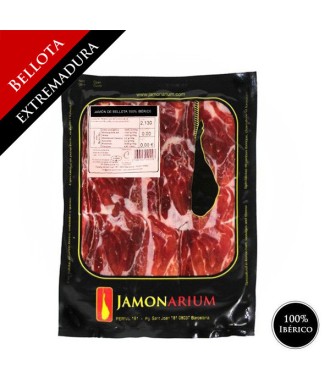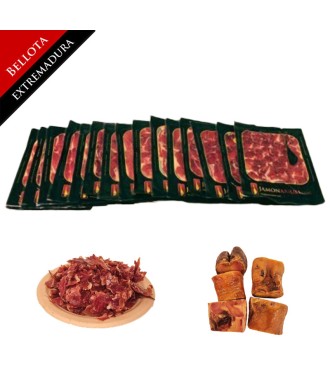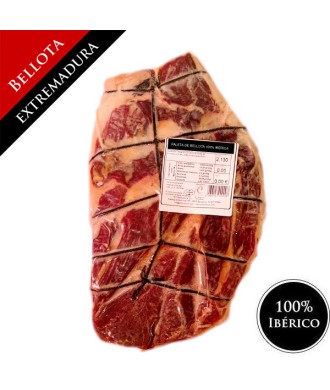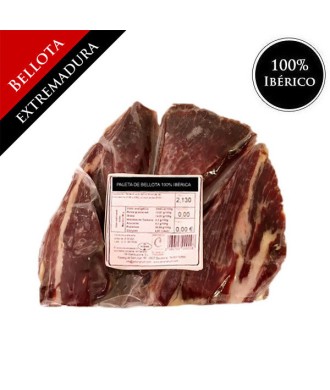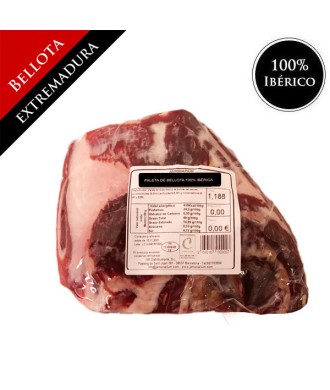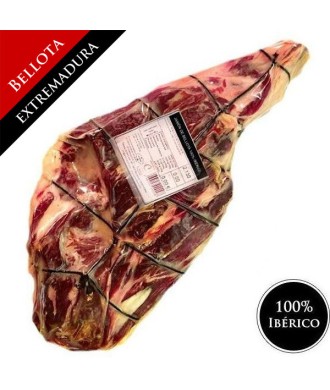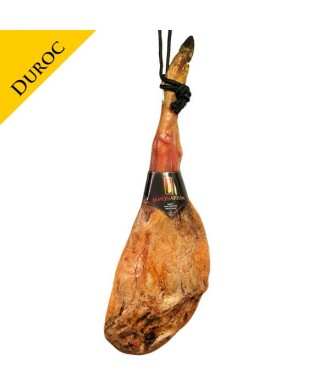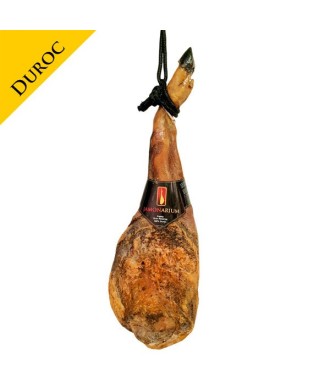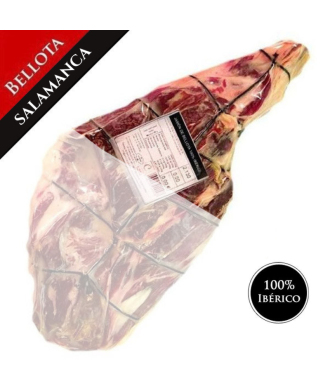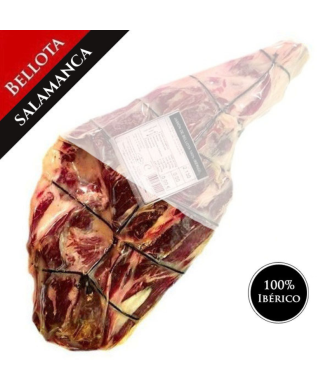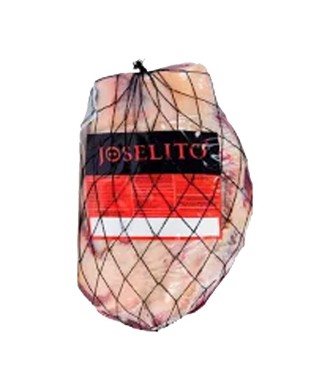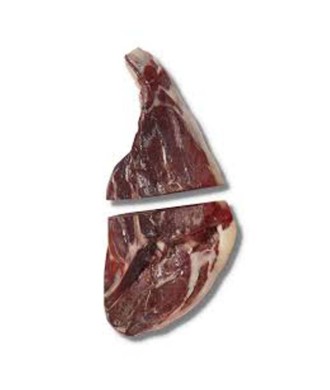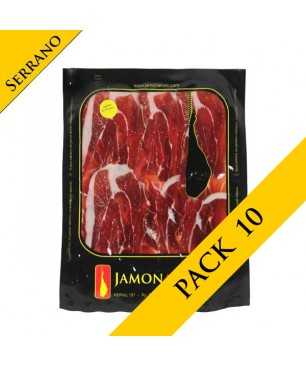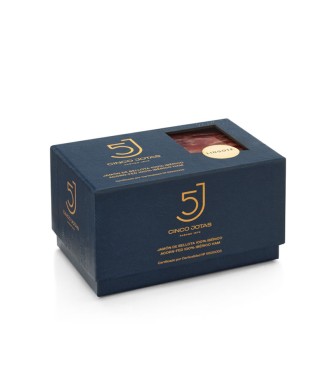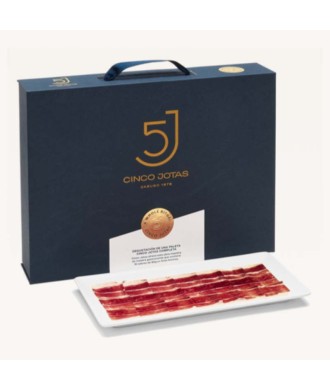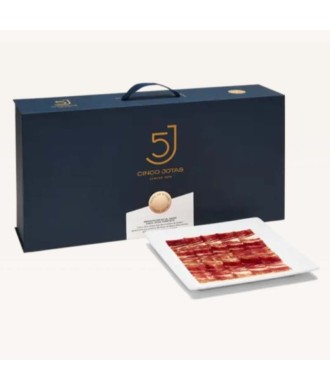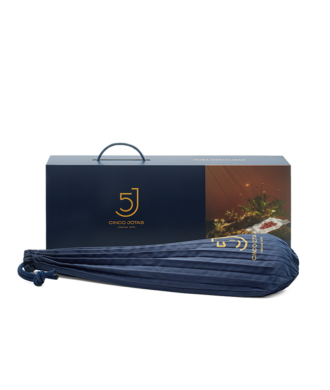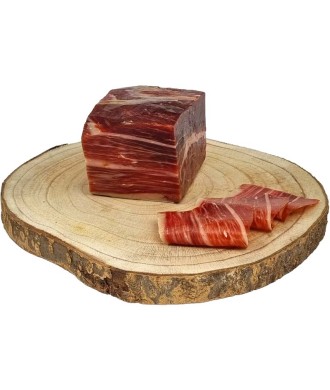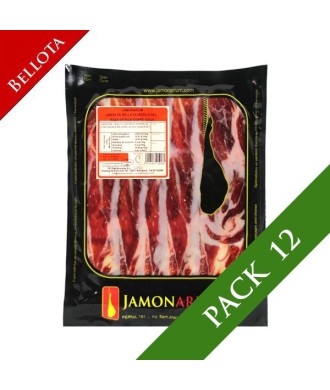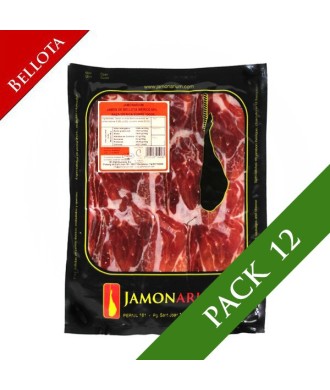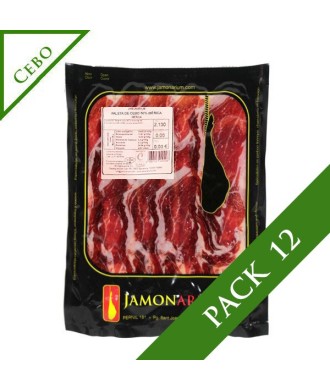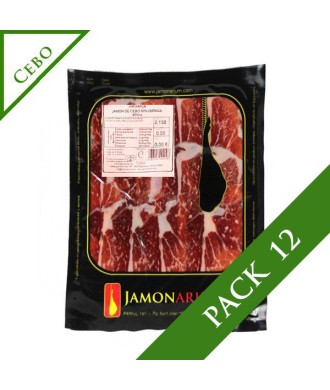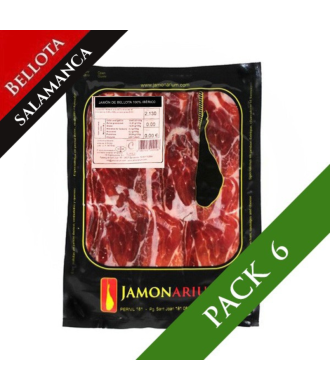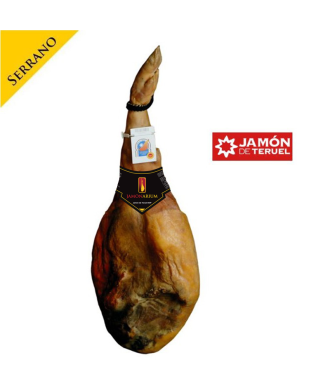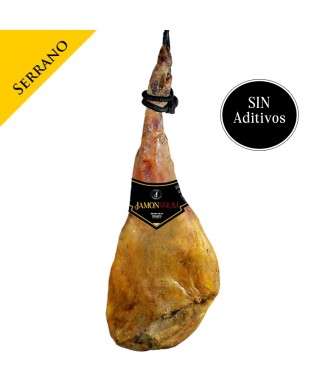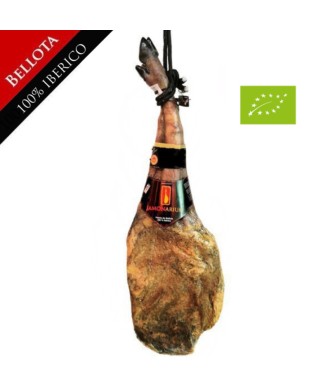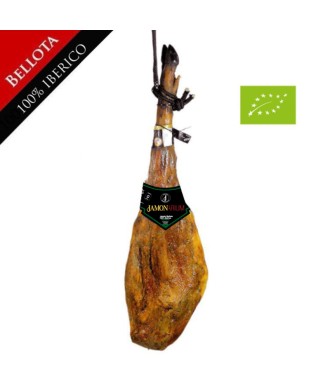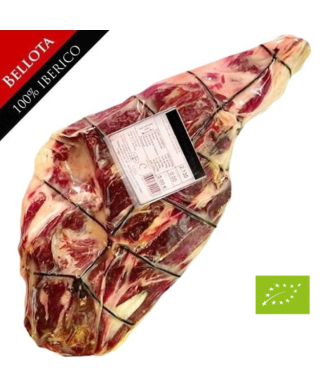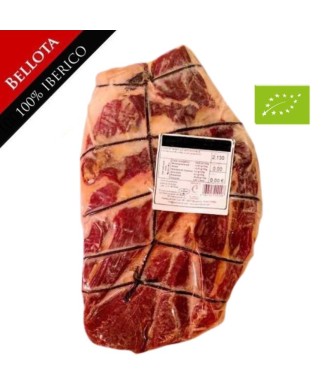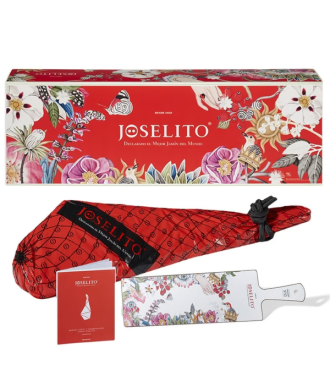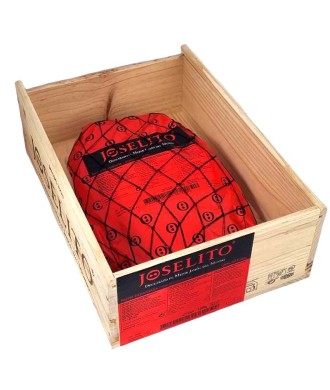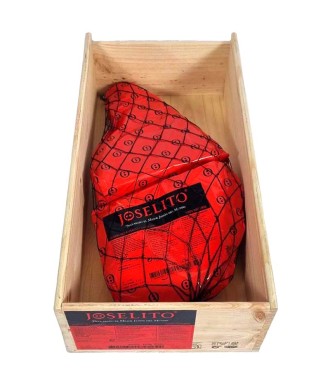Diese Website verwendet eigene Cookies und Cookies von Drittanbietern, um unsereDienste zu verbessern. Und zeigen Sie Werbung in Bezug auf Ihre Vorlieben, indem Sie Ihre Gewohnheiten analysieren navigation. Um Ihre Zustimmung zu seiner Verwendung zu geben, klicken Sie auf die Schaltfläche Akzeptieren.
Cookie-Einstellungen
| Keks | Anbieter | Zweck | Verfallsdatum |
|---|---|---|---|
| PHP_SESSID | www.jamonarium.com | Das PHPSESSID-Cookie ist PHP nativ und ermöglicht es Websites, serialisierte Statusdaten zu speichern. Auf der Website wird es verwendet, um eine Benutzersitzung aufzubauen und Statusdaten durch ein temporäres Cookie zu übergeben, das allgemein als Sitzungscookie bekannt ist. Diese Cookies verbleiben nur auf Ihrem Computer, bis Sie den Browser schließen. | Sitzung |
| PrestaShop-# | www.jamonarium.com | Es ist ein Cookie, das Prestashop verwendet, um Informationen zu speichern und die itzung des Benutzers offen zu halten. Ermöglicht das Speichern von Informationen wie Währung, Sprache, Kundenkennung und anderen Daten, die für das ordnungsgemäße Funktionieren des Shops erforderlich sind. | 480 stunden |
| rc::a | Es wird verwendet, um Bot-Anfragen zu lesen und zu filtern. | Hartnäckig | |
| rc::c | Es wird verwendet, um Bot-Anfragen zu lesen und zu filtern. | Hartnäckig |
| Keks | Anbieter | Zweck | Verfallsdatum |
|---|---|---|---|
| ads/ga-audiences | Diese Cookies werden von Google AdWords verwendet, um Besucher wieder einzubeziehen, die aufgrund des Online-Verhaltens des Besuchers auf verschiedenen Websites wahrscheinlich zu Kunden werden. | Session |
| Keks | Anbieter | Zweck | Verfallsdatum |
|---|---|---|---|
| _ga | Registriert eine eindeutige ID, die verwendet wird, um statistische Daten dazu, wie der Besucher die Website nutzt, zu generieren. | 2 Jahre | |
| _gat | Wird von Google Analytics verwendet, um die Anforderungsrate einzuschränken | 1 Tag | |
| _gat_gtag_UA_# | Wird verwendet, um die Anforderungsrate zu drosseln. | 1 Minute | |
| _gd# | Dies ist ein Google Analytics-Sitzungscookie, mit dem statistische Daten zur Nutzung der Website generiert werden, die beim Beenden Ihres Browsers entfernt werden. | Session | |
| _gid | Registriert eine eindeutige ID, die verwendet wird, um statistische Daten dazu, wie der Besucher die Website nutzt, zu generieren. | 1 Tag |
Ausgezeichnet 
-
Schinken
- Ganze
-
Knochenlose
- Geschnittene (Scheiben)
- Ganze Geschnittene
- Arten Von Schinken
-
Schinken Bellota 100% Ibérico Pata Negra
-
Jabugo (Huelva) Schinken
- Salamanca Schinken
- Extremadura Schinken
- Los Pedroches
- .Jamón ecológico
- Bellota Ibérico 50% Schinken
- Cebo de Campo ibérico Schinken
- Cebo ibérico Schinken
- Serrano Gran Reserva Schinken
- Jamones Joselito
- Wurstwaren
- Vollständige Wurstwaren
- In Scheiben geschnittene
- Iberische Würste
- Leon Würstchen
-
Arten von Wurstwaren
- Käse
- Vollständige Käse
- Portionkäse
- Schafskäse
- Kuhkäse
- Ziegenkäse
- Trockener Käse
- Halbgehärteter Käse
- Käsepakete
-
Käsemarken
- DO Idiazabal
- Sant Gil Albió
- Mas El Garet
- Viriato
- Zanetti
- Dorrea
- Beiardi
- Rosario Castaño
- Andere Marken von Käse
- Gourmet
- Pasteten und Foie gras
- Meeresfrüchte
-
Fischkonserven
- Spanische Traditionelle Gerichte
- Oliven & Vorspeisen
- Hülsenfrüchte & Gemüse
- Desserts
- Gourmet-Produktpakete
- Gourmet-Konserven von BOXES
- Gourmet - Brands
- Ramón Peña
- Mas Parés
- Agromar & Arbeyal
- Imperia
- Dardo
- Ortiz
- Paco Lafuente
- Yurrita
- Marzo
- Casa Riera Ordeix
- Frinsa
- Ribeira
- Herpac
- Greco Foie Gras
- La Luna
- Los Peperetes
- Bodega Coruña del Conde
- Pago de los Capellanes
- Olivenöl
- Arbequina
- Picual
- Cornicabra
- Manzanilla
- Essig und Saucen
- Hojiblanca
- Coupage
- Bio-Olivenöl
- Olivenöl von BOX
- Olivenöl in Dosen
- Großformatiges Olivenöl
- Olivenöl Premium
- Olivenöl mit Auszeichnungen
- Olivenölpackungen
-
Die besten Ölmühlen
- Wein
- Rotwein
- Weißwein
- Dosenweine
- Vinos Rosados
- Schaumwein (Cava)
- Bio-Weine
- Naturwein
- Klassische Weine
- Sangría
- Wermut
- Whisky
- Wein packs
-
Wein VON BOX
- Kisten mit Rotwein
- Kisten für Weißwein
- Kisten mit Roséwein
- Kisten mit Cava
- Wermut-Boxen
- Sangria-Boxen
- Price
- Origine
- D.O. Rioja
-
D.O. Ribera del Duero
- D.O. Priorat
- D.O. Somontano
- D.O. Empordà
- D.O. Rias Baixas
- D.O. Bierzo
- D.O. Montsant
- D.O. Rueda
- D.O. Penedés
- D.O. Terra Alta
- D.O. La Mancha
- D.O. Cava
- More D.O.
- Zubehör
SucheEtwas zu sagen...
Nichts wurde gefunden.
Browser nicht unterstützt.
WunschlisteWarenkorb 0Es gibt keine weiteren Artikel in Ihrem Warenkorb
Blog navigationFranzösisch Schinken
Sorts of french hams
In France, hams are classified in 3 groups: Jambon Sec Supérieur, Jambon sec and Jambon Cru. In the first group, we find those whose minimum weight is 8.5 kg and they are 210 days cured. The most famous ham of this group is Bigorra ham, very appreciated in France and coming from a very antique pig breed, the Gascon, considered first cousin of Spanish iberian pig due to their similarities but more hairy. This ham is very similar to the ibérico de bellota, but its flavour is more salty.
In Jambon Sec group we find those hams which weighs more than 7.5 kg and the curying period is longer than 130 days. It is important to highlight the famous Bayona and Ardennes hams, the only ones having PGI. We also want to highlight Savoie, Auvergne, Laucaune and Najac hams.
At the end, there are Jambon Cru cathegory. Those hams minimum weight is 6.5 kg and their production is similar to Jambon Sec, but they don't have minimum maturation period. As a example, we find Vendée and Alsacia hams, the last named smoked and very popular.
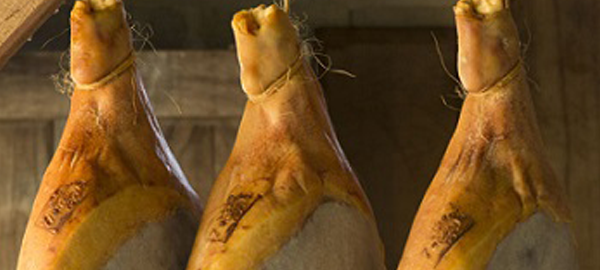
Bayona ham
If we refer to french hams, we should name Bayona's ham (Jambon de Bayonne) as it is the most consumed in France. It has PGI from 1998, so they should accomplish some requirements to be considered as Bayona ham. Hams should come from pigs in the south-west France, more precisely from Adour's basin. Moreover, the feed of the pig should be conformed 60% by cereals. The salt used in the salting process should come from Pays de l'Adour salines and its cutying should be done inside Azour's area (area conformed by Atlantic Pyrenees, Hautes Pyrenees, Landes and Bergs) during 7 months minimum.
This ham is easily identified thanks to the Basque cross ("Lauburu") branded on the skin. Normally it is presented without hoof and its colours are red tones as ground pepper has been added during the cured period to empower its flavour. Its flavour is more sweet than ibérico ham, so it marinates with red, soft and dessert wines.
The history of the Jamón of Bayonne is very well-known. According to the legend, in the 14th century Gaston Fébus injured a wild boar which gor to escape during one of his hunting sessions. Months later, a group of hunters found it drowned in a salted water font in Salies-De-Béarn, perfectly preserved. The salting of Adour's basin has been discovered, area of production of Bayona hams.
Another curiosity of this ham is the market done in his honor in Bayona during easter, where models from traders may be boughts. The market is done since 1462.
Veröffentlicht in: Schinken InformationenÄhnliche Produkte
Ibérico Bellota Schinken, 50% Iberische Rasse
Preis:422,09 €Die mit Iberischer Bellota Schinken, 50% Iberische Rasse, wurde in der...Ibérico Cebo Schinken, 50% iberische Rasse
Preis:208,48 €Die mit Ibérico Cebo Schinken, 50% iberische Rasse, wurde in der Gegend von...Gran Reserva Selección Schinken, +20 Monate (ganzer)
Preis:156,32 €Die mit Gran Reserva Selección Schinken, und hat eine Reifezeit von 20...Ibérico Bellota Vorderschinken, 50% iberische Rasse
Preis:149,50 €Die mit Ibérico Bellota Vorderschinken, 50% iberische Rasse, wurde in der...Ibérico Cebo Vorderschinken, 50% iberische Rasse
Preis:94,05 €Die mit Iberica Cebo Vorderschinken, 50% iberische Rasse, wurde in der...Gran Reserva Selección Vorderschinken, +15 Monate (ganzer)
Preis:74,25 €Die mit Gran Reserva Selección Vorderschinken (ganzer), und hat eine...Ibérico Bellota Schinken, 50% Iberische Rasse - OHNE KNOCHEN
Preis:385,44 €Our Iberian Ham Bellota is one of our best-sellers and one of our...Ibérico Cebo Schinken, 50% iberische Rasse - OHNE KNOCHEN
Preis:169,96 €Der Iberische Freilandschwein "Cebo" Schinken ist eine echte Delikatessen...Gran Reserva Selección Schinken, +20 Monate - OHNE KNOCHEN
Preis:162,54 €Der Selection Schinken Gran Reserva ist ein unvergleichbarer Serrano...Ibérico Bellota Vorderschinken, 50% iberische Rasse - OHNE KNOCHEN
Preis:167,28 €Der Iberische Bellota Eichel-Vorderschinken ohne Knochen ist ein...Ibérico Cebo Vorderschinken, 50% iberische Rasse - OHNE KNOCHEN
Preis:92,72 €Der Iberischer Freilandschwein "Cebo" Vorderschinken ohne Knochen ist eine...Iberischer Bellota-Schinken, 50% iberische Rasse geschnitten 100g
Preis:14,90 €Our Iberian Ham Bellota 50% Iberian breed is one of our best-sellers and one...Iberischer Cebo-Schinken, 50% iberische Rasse geschnitten 100g
Preis:8,50 €Der Iberische Freilandschwein "Cebo" Schinken ist eine echte Delikatessen...Gran Reserva Selección Ham, +20 Monate geschnitten 100g
Preis:5,90 €Der Selection Schinken Gran Reserva ist ein unvergleichbarer, es handelt...Iberische Bellota-Schulter, 50% iberische Rasse geschnitten 100g
Preis:10,90 €Der Iberische Bellota Eichel-Vorderschinken ist ein Spitzenprodukt der...Iberische Cebo Palette, 50% iberische Rasse geschnitten 100g
Preis:7,90 €Die mit Iberica Cebo Vorderschinken, 50% iberische Rasse, wurde in der...Extra Schnitzel (150gr)
Preis:9,50 €The iberico bits are the remaining ham still on the bone when it is boned....Vorderschinken Gran Reserva Selección Schnitzel 150g
Preis:7,50 €Der Schinken Gran Reserva Selección wird mit Schinken von Schweinen der...Ibérico Cebo Vorderschinken, 50% iberische Rasse - OHNE KNOCHEN - Caña
Preis:53,70 €Der Iberischer Freilandschwein "Cebo" Vorderschinken ohne Knochen ist eine...Ibérico Cebo Vorderschinken, 50% iberische Rasse - OHNE KNOCHEN - Punta
Preis:32,22 €Der Iberischer Freilandschwein "Cebo" Vorderschinken ohne Knochen ist eine...Ibérico Bellota Schinken (Salamanca), 100% Iberische Rasse - "Pata Negra"
Preis:487,48 €Die mit Bellota Ibérico Schinken (Salamanca), 100% Iberische Rasse - "Pata...Ibérico Bellota Vorderschinken (Salamanca), 100% Iberische Rasse - "Pata Negra"
Preis:184,77 €Die mit Bellota Ibérico Vorderschinken (Salamanca), 100% Iberische Rasse -...Ibérico Cebo de Campo Vorderschinken , 50% iberische Rasse
Preis:116,37 €Die mit Vorderschinken Cebo de Campo Ibérico, 50% iberische Rasse, wurde in...Gran Reserva Selección Vorderschinken, +15 Monate - OHNE KNOCHEN
Preis:84,60 €The boneless Gran Reserva Selección shoulder is the best option to enjoy at...Ibérico Bellota Schinken (Huelva), 100% Iberische Rasse - Pata negra
Preis:501,75 €Die mit Schinken iberische Bellota (Huelva), 100% Iberische Rasse - Pata...Ibérico Bellota (Huelva) Vorderschinken, 100% Iberische Rasse - Pata negra
Preis:199,03 €Die mit Ibérico Bellota Vorderschinken (Huelva), 100% Iberische Rasse - Pata...Gran Reserva Selección Vorderschinken, +15 Monate Vorderschinken geschnitten 100g
Preis:4,90 €Die Gran Reserva Selección Paleta ist das Vorderbein eines weißen Schweins,...Ibérico Cebo de Campo Schinken, 50% iberische Rasse
Preis:216,30 €Die mit Iberico Cebo de Campo Schinken, 50% iberische Rasse, wurde in der...Ibérico Bellota Schinken (Los Pedroches, Córdoba), 100% iberische Rasse - Pata negra
Alter Preis:535,20 € Preis:481,68 € Rabatt:10% Sparen Sie:-53,52 €Die mit Ibérico Bellota Schinken (Los Pedroches, Córdoba), 100% iberische...Ibérico Bellota Vorderschinken (Extremadura), 100% Iberische Rasse - Pata Negra
Preis:209,50 €Die mit Ibérico Bellota Vorderschinken (Extremadura), 100% Iberische Rasse -...Iberischer Cebo de Campo Schinken, 50% Iberische Rasse geschnitten 100g
Preis:10,20 €Der Iberischer Freilandschwein "Cebo de Campo" Schinken ist eine echte...Iberische Cebo de Campo-Schulter, 50% iberische Rasse, geschnitten 100g
Preis:9,20 €Der Iberische Freilandschwein "Cebo de Campo" Vorderschinken ist eine echte...Iberico Cebo de Campo Schinken, 50% iberische Rasse - OHNE KNOCHEN
Preis:219,20 €Der Iberischer Freilandschwein "Cebo de Campo" Schinken ist eine echte...Ibérico Cebo de Campo Vorderschinken, 50% iberische Rasse - OHNE KNOCHEN
Preis:110,47 €Der Iberische Freilandschwein "Cebo de Campo" Vorderschinken ist eine echte...Bellota Iberico Schinken (Salamanca), 100% iberische Rasse - Pata Negra geschnitten 100g
Preis:22,50 €Der 100% Iberische Bellota (Salamanca) Eichelschinken ist ein...Vorderschinken Bellota iberische (Salamanca), 100% iberische Rasse - Pata Negra geschnitten 100 g
Preis:16,50 €Der Bellota 100% rein iberischen Eichel Vorderschinken"Pata Negra"...Schinken 100% ibérico Bellota Cinco Jotas (5J) von Jabugo
Preis:583,88 €Der Schinken Bellota 100% ibérico Cinco Jotas (5J) von Jabugo 100%...Vorderschinken 100% Ibérico Bellota Cinco Jotas (5j) von Jabugo
Preis:232,50 €Die mit Vorderschinken Bellota 100% Iberischer Cinco Jotas (5j) von Jabugo,...Joselito Gran Reserva Schinken
Preis:626,50 €Der Schinken Joselito Gran Reserva gilt als der beste Schinken der Welt....Bellota iberischer Schinken (Huelva), 100% iberische Rasse - Pata Negra geschnitten 100g
Preis:24,50 €Der 100% Iberische Bellota (Huelva) Eichelschinken ist ein Spitzenmässiger...Vorderschinken iberische Bellota (Huelva), 100% iberische Rasse - Pata Negra geschnitten 100g
Preis:17,50 €Der Bellota 100% rein iberischen Eichel Vorderschinken"Pata Negra" (Huelva)...Joselito Gran Reserva Vorderschinken
Preis:263,45 €Der Vorderschinken Joselito Gran Reserva gilt als der beste Schinken der...Ibérico Bellota Vorderschinken (Los Pedroches, Córdoba), 100% Iberische Rasse - Pata Negra
Alter Preis:199,03 € Preis:179,12 € Rabatt:10% Sparen Sie:-19,90 €Die mit Ibérico Bellota Vorderschinken (Los Pedroches, Córdoba), 100%...Cinco Jotas (5J) Schinken von Jabugo 100% Iberischer Bellota - PACK SLICED 25 bags
Preis:690,00 €The Cinco Jotas (5J) Jabugo Ham 100% ibérico bellota pata negra comes from...Schinken Bellota 100% ibérico Cinco Jotas (5J) von Jabugo 80g
Preis:29,90 €The Schinken Bellota 100% ibérico Cinco Jotas (5J) von Jabugo traditionell...Vorderschinken Bellota 100% Ibérico Cinco Jotas (5j) von Jabugo 80g
Preis:19,90 €Die mit Vorderschinken Bellota 100% Iberischer Cinco Jotas (5j) von Jabugo,...Joselito Gran Reserva Schinken geschnitten 70g
Preis:23,90 €Joselito Gran Reserva ham is considered the best ham in the world. Joselito...Joselito Gran Reserva vorderschinken geschnitten 70g
Preis:16,90 €Joselito Gran Reserva Shoulder is considered the best shoulder in the world....Ibérico Bellota Vorderschinken (Huelva), 100% Iberische Rasse - Pata negra - OHNE KNOCHEN
Preis:180,39 €Der Paleta 100% Iberico bellota (Huelva) pata negra ist ein Schinken von...PACK 12 - Bellota iberischer Schinken, 100% iberische (Huelva) - Pata negra geschnitten 100g
Alter Preis:294,00 € Preis:279,30 € Rabatt:5% Sparen Sie:-14,70 €PACK 12 - Bellota iberische Vorderschinken, 100% iberico (Huelva) - Pata Negra geschnitten 100g
Alter Preis:210,00 € Preis:199,50 € Rabatt:5% Sparen Sie:-10,50 €Ibérico Cebo de Campo Vorderschinken , 50% iberische Rasse - OHNE KNOCHEN - Caña
Preis:69,48 €Der Ibérico Cebo de Campo Vorderschinken, 50% iberische Rasse ohne Knochen -...Ibérico Cebo de Campo Vorderschinken, 50% iberische Rasse - OHNE KNOCHEN - Punta
Preis:49,22 €Der Ibérico Cebo de Campo Vorderschinken, 50% iberische Rasse ohne Knochen -...Ibérico Bellota (Huelva) Vorderschinken, 100% Iberische Rasse - Pata negra - OHNE KNOCHEN - Caña
Preis:99,23 €Die 100% reine iberische Paleta Bellota (Huelva) Pata negra deshuesada -...Ibérico Bellota (Huelva) Vorderschinken, 100% Iberische Rasse - Pata negra - OHNE KNOCHEN - Punta
Preis:61,43 €The Bellota 100% Iberian Vorderschinken (Huelva) Pata negra ohne Knochen -...Ibérico Bellota Schinken (Huelva), 100% Iberische Rasse - Pata negra - OHNE KNOCHEN
Preis:455,40 €Die 100% reine iberische Schinken Huelva Pata negra ohne Knochen ist eine...Ibérico Bellota Schinken (Salamanca), 100% Iberische Rasse - Pata Negra - OHNE KNOCHEN
Preis:483,60 €Der 100% Iberische Bellota Pata Negra Eichelschinken aus Salamanca ohne...Gran Reserva Selección Vorderschinken, +15 Monate - GANZ geschnitten
Alter Preis:85,00 € Preis:76,50 € Rabatt:10% Sparen Sie:-8,50 €Whole Gran reserva Selección shoulder sliced. Comfortable and ideal format...Vorderschinken Cebo Ibérico, 50% Iberische Rasse - GANZ geschnitten
Alter Preis:132,00 € Preis:118,80 € Rabatt:10% Sparen Sie:-13,20 €Der Iberischer Freilandschwein "Cebo" Vorderschinken geschnitten, ist das...Vorderschinken Cebo de Campo ibérico, 50% Iberian Breed - GANZ geschnitten
Alter Preis:151,50 € Preis:136,35 € Rabatt:10% Sparen Sie:-15,15 €Der Iberische Freilandschwein "Cebo de Campo" Vorderschinken ist eine echte...Iberische Bellota Schulter, 50% Iberische Rasse - GANZ geschnitten
Alter Preis:177,00 € Preis:159,30 € Rabatt:10% Sparen Sie:-17,70 €Der Iberischer Bellota Eichel-Vorderschinken geschnitten, ist das bequemste...Iberischen Bellota Vorderschinken (Salamanca), 100% Iberische Rasse - Pata Negra GANZ geschnitten
Alter Preis:261,00 € Preis:234,90 € Rabatt:10% Sparen Sie:-26,10 €Der Bellota 100% rein iberischen Vorderschinken"Pata Negra" (Salamanca) ist...Gran Reserva Selection Ham, +20 Monate - GANZER geschnitten
Alter Preis:159,00 € Preis:143,10 € Rabatt:10% Sparen Sie:-15,90 €Der Selection Schinken Gran Reserva geschnitten, ist das bequemste Format...Iberischer Cebo de Campo Schinken, 50% Iberische Rasse - GANZ geschnitten
Alter Preis:268,50 € Preis:241,65 € Rabatt:10% Sparen Sie:-26,85 €Der Iberischer Freilandschwein "Cebo de Campo" Schinken ist eine echte...Bellota Iberischer Schinken, 50% Iberische Rasse - GANZ abgeschnitten
Alter Preis:386,00 € Preis:347,40 € Rabatt:10% Sparen Sie:-38,60 €Der Iberischer Bellota Eichelschinken geschnitten ist das bequemste Format...Bellota Iberico Schinken (Salamanca), 100% Rasse Iberische - Pata Negra GANZ geschnitten
Alter Preis:576,00 € Preis:518,40 € Rabatt:10% Sparen Sie:-57,60 €Der 100% Iberische Bellota (Salamanca) Eichelschinken ist ein...Bellota Ibérico Schinken (Huelva), 100% Rasse Iberische - "Pata Negra" GANZ geschnitten
Alter Preis:626,00 € Preis:563,40 € Rabatt:10% Sparen Sie:-62,60 €Der 100% Iberische Bellota (Huelva) Eichelschinken ist ein Spitzenmässiger...Ibérico Bellota Schinken, 50% Iberische Rasse - OHNE KNOCHEN - Punta
Preis:130,41 €Our Iberian Ham Bellota is one of our best-sellers and one of our...Ibérico Bellota Schinken, 50% Iberische Rasse - OHNE KNOCHEN - Caña
Preis:182,23 €Our Iberian Ham Bellota is one of our best-sellers and one of our...Schinken 100% ibérico Bellota Cinco Jotas (5J) von Jabugo - OHNE KNOCHEN
Preis:790,20 €Der Schinken Bellota 100% ibérico Cinco Jotas (5J) von Jabugo 100% Iberischer...Vorderschinken 100% Ibérico Bellota Cinco Jotas (5j) von Jabugo - OHNE KNOCHEN
Preis:251,91 €Die mit Vorderschinken Bellota 100% Iberischer Cinco Jotas (5j) von Jabugo -...Ibérico Bellota Schinken (Extremadura), 100% Iberische Rasse - Pata negra
Preis:535,20 €Die mit Schinken Ibérico Bellota (Extremadura), 100% Iberische Rasse - Pata...Bellota 100% Iberischen Vorderschinken (Extremadura) - Pata Negra geschnitten 100g
Preis:17,50 €Der Bellota (Eichel) 100% reinen Iberischen Vorderschinken (Extremadura) -...Bellota 100% Iberischen Schinken (Extremadura) - Pata Negra geschnitten 100g
Preis:23,90 €Der Bellota (Eichel) 100% reinen Iberischen Schinken (Extremadura) - "Pata...Bellota 100% Iberischen Vorderschinken (Extremadura) - Pata Negra GANZ geschnitten
Alter Preis:276,00 € Preis:248,40 € Rabatt:10% Sparen Sie:-27,60 €Der Bellota (Eichel) 100% reinen Iberischen Vorderschinken (Extremadura) -...Bellota 100% Iberischen Schinken (Extremadura) - Pata Negra GANZ geschnitten
Alter Preis:611,00 € Preis:549,90 € Rabatt:10% Sparen Sie:-61,10 €Der Bellota (Eichel) 100% reinen Iberischen Schinken (Extremadura) - "Pata...Ibérico Bellota Vorderschinken (Extremadura), 100% Iberische Rasse - Pata Negra - OHNE KNOCHEN
Preis:180,39 €Der Bellota (Eichel) 100% reinen Iberischen Vorderschinken (Extremadura) -...Ibérico Bellota Vorderschinken (Extremadura), 100% Iberische Rasse - Pata Negra - OHNE KNOCHEN - Punta
Preis:75,60 €Der Bellota (Eichel) 100% reinen Iberischen Vorderschinken (Extremadura) -...Ibérico Bellota Vorderschinken (Extremadura), 100% Iberische Rasse - Pata Negra - OHNE KNOCHEN - Caña
Preis:99,23 €Der Bellota (Eichel) 100% reinen Iberischen Vorderschinken (Extremadura) -...Ibérico Bellota Schinken (Extremadura), 100% Iberische Rasse - Pata Negra - OHNE KNOCHEN
Preis:430,10 €Der Bellota (Eichel) 100% reinen Iberischen Schinken (Extremadura) - "Pata...100% Duroc Gran Reserva Schinken
Preis:174,82 €Der 100% Duroc Gran Reserva Schinken ist ein Schinken von höchster Qualität...100% Duroc Gran Reserva Vorderschinken
Preis:81,37 €The 100% Duroc Gran Reserva Shoulder is a shoulder of the highest quality...Ibérico Bellota Schinken (Salamanca), 100% Iberische Rasse - Pata Negra - OHNE KNOCHEN - Caña
Preis:359,11 €Der Bellota Iberische Schinken (Salamanca), 100% Iberische Rasse - Pata...Ibérico Bellota Schinken (Salamanca), 100% Iberische Rasse - Pata Negra - OHNE KNOCHEN - Punta
Preis:226,10 €Der Bellota Iberische Schinken (Salamanca), 100% Iberische Rasse - Pata...Joselito Gran Reserva Vorderschinken - OHNE KNOCHEN
Preis:266,50 €Der Vorderschinken Joselito Gran Reserva - ohne knochen gilt als der beste...Joselito Gran Reserva Schinken - OHNE KNOCHEN
Preis:942,50 €Der Schinken Joselito Gran Reserva - ohne knochen gilt als der beste...PACK 10 - Jamón Gran Reserva Selección, +20 meses cortado 100g
Alter Preis:59,00 € Preis:50,15 € Rabatt:15% Sparen Sie:-8,85 €Schinkenblock Cinco Jotas (5j) 450 gr
Preis:150,90 €Der Schinkenblock Cinco Jotas (5j) ist ein zu 100 % aus iberischer Eichel...Ritual der geschnittenen Cinco Jotas Vorderschinken (ganz)
Preis:319,00 €Die mit Cinco Jotas (5j) aus Jabugo, 100 % iberische Schulter aus Eichelmast...Ritual der geschnittenen Cinco Jotas schinken (ganz)
Preis:745,00 €Die mit Cinco Jotas (5j) aus Jabugo, 100 % iberische Schinken Bellota ganz...Vorderschinken 100% Iberico Bellota Jabugo (Maletín) Cinco Jotas (5j) 5-6kg , GANZ
Preis:319,00 €Diese Vorderschinken 100% Iberico Bellota Jabugo (Maletín) Cinco Jotas (5j)...Das Herz aus 100 % iberischem Bellota-Schinken, reines Umami 600gr
Preis:125,00 €Das Herz aus 100 % iberischem Bellota-Schinken ist ein Schinkenblock, der zu...Serrano Gran Reserva Schinken (g.U Teruel) 22 Monaten
Preis:175,50 €Der Schinken aus Teruel trägt die charakteristische Herkunftsbezeichnung...Schinken aus der Alpujarra ohne Zusatzstoffe +20 Monate - Ganz
Preis:158,40 €Dieser Schinken aus der Alpujarra ohne Zusatzstoffe und wurde mehr +24...Ibérico Bellota Vorderschinken 100 % biologische und zusatzstofffreie - Pata Negra
Preis:197,10 €Diese Ibérico Bellota Vorderschinken 100 % biologische und zusatzstofffreie...Ibérico Bellota Schinken 100% iberischer Bio ohne Zusatzstoffe - Pata Negra
Preis:593,26 €Dieser Ibérico Bellota Schinken 100% iberischer Bio ohne Zusatzstoffe - Pata...Ibérico Bellota Schinken 100% iberischer Bio ohne Zusatzstoffe - Pata Negra - OHNE KNOCHEN
Alter Preis:642,40 € Preis:578,16 € Rabatt:10% Sparen Sie:-64,24 €Dieser 100 % biologische iberische Bellota-Schinken wurde mit Meersalz...Ibérico Bellota Vorderschinken 100 % biologische und zusatzstofffreie - Pata Negra - OHNE KNOCHEN
Alter Preis:295,63 € Preis:266,07 € Rabatt:10% Sparen Sie:-29,56 €Diese 100 % biologische und zusatzstofffreie iberische Paleta de Bellota...Joselito Gran Reserva 7-8 Kg Schinken (Geschenk) - GANZ
Preis:750,00 €Joselito Gran Reserva Schinken gilt als der beste Schinken der Welt....Joselito Vintage Blister Geschnitten 70g
Preis:33,90 €Der Joselito Vintage Blister Geschnitten 70g Schinken bietet ein...Blindverkostung, das Jamonarium-Spiel
Preis:39,90 €Herausforderung für Ihren Gaumen: Das Jamonarium-Blindverkostungsspiel!...Joselito Gran Reserva Vorderschinken in Holzkiste - OHNE KNOCHEN - CAJA MADERA
Preis:246,40 €Der Vorderschinken Joselito Gran Reserva in Holzkiste - ohne knochen gilt...Joselito Gran Reserva Schinken in Holzkiste - OHNE KNOCHEN - CAJA MADERA
Preis:999,90 €Der Schinken Joselito Gran Reserva in Holzkiste - ohne knochen gilt als der...Ähnliche Beiträge
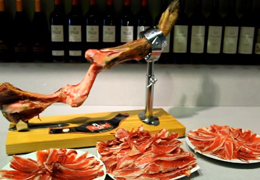 Wie können wir spanischen Schinkenknochen von Serrano und Ibérico Bellota verwenden?
28/02/2018649 Gefällt mirUnter Gastronomie, Kochern und Gourmet-Liebhabern; Es ist bekannt, dass aus dem Knochen von Iberico de Bellota und...Weiter lesen
Wie können wir spanischen Schinkenknochen von Serrano und Ibérico Bellota verwenden?
28/02/2018649 Gefällt mirUnter Gastronomie, Kochern und Gourmet-Liebhabern; Es ist bekannt, dass aus dem Knochen von Iberico de Bellota und...Weiter lesen Der D.O. Aus Huelva-Schinken wird DO Jabugo
12/03/20181879 Gefällt mirEines der großen Schinkenereignisse im Jahr 2017 ist die Namensänderung von DO Huelva, die zu DO Jabugo wurde. Diese...Weiter lesen
Der D.O. Aus Huelva-Schinken wird DO Jabugo
12/03/20181879 Gefällt mirEines der großen Schinkenereignisse im Jahr 2017 ist die Namensänderung von DO Huelva, die zu DO Jabugo wurde. Diese...Weiter lesen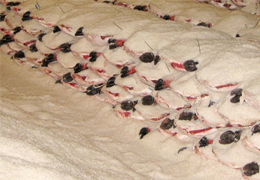 The salting of Ibérico ham: the key of the salt
11/04/2018485 Gefällt mirThe salting Ibérico ham process is one the most important steps in the elaboration process. This is a delicate...Weiter lesen
The salting of Ibérico ham: the key of the salt
11/04/2018485 Gefällt mirThe salting Ibérico ham process is one the most important steps in the elaboration process. This is a delicate...Weiter lesen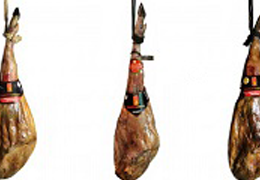 Arten von iberischem Schinken
27/01/20182047 Gefällt mirSehr oft, wenn man von Schinken spricht, wird der Begriff "Pata Negra" oder "Jabugo" verwendet, ohne auf die Herkunft...Weiter lesen
Arten von iberischem Schinken
27/01/20182047 Gefällt mirSehr oft, wenn man von Schinken spricht, wird der Begriff "Pata Negra" oder "Jabugo" verwendet, ohne auf die Herkunft...Weiter lesen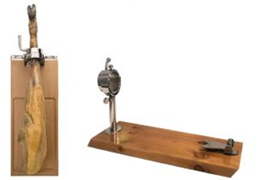 Wie wählen Sie Ihren idealen Schinkenhalter? Die eine an der Wand oder eine auf den Tisch legen?
06/07/20171048 Gefällt mirBei der Ankunft des Winters, mit ihren Festen und Weihnachtsfeiern, sind wir scharf darauf, Qualitätsschinken unter...Weiter lesen
Wie wählen Sie Ihren idealen Schinkenhalter? Die eine an der Wand oder eine auf den Tisch legen?
06/07/20171048 Gefällt mirBei der Ankunft des Winters, mit ihren Festen und Weihnachtsfeiern, sind wir scharf darauf, Qualitätsschinken unter...Weiter lesen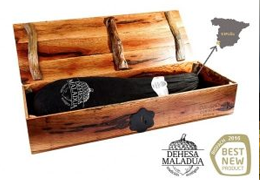 "Maladúa" der weltweit teuerste Schinken
19/07/2016646 Gefällt mir"Maladúa" der weltweit teuerste Schinken kostet 4,100 € der Schenkel. Es besteht kein Zweifel. Spanische Marke...Weiter lesen
"Maladúa" der weltweit teuerste Schinken
19/07/2016646 Gefällt mir"Maladúa" der weltweit teuerste Schinken kostet 4,100 € der Schenkel. Es besteht kein Zweifel. Spanische Marke...Weiter lesenChatten Sie mit uns auf WhatsApp
Rufen Sie uns an oder hinterlassen Sie Ihre Daten und wir rufen Sie so schnell wie möglich zurück
- Wein
- Käse
-
Jabugo (Huelva) Schinken






